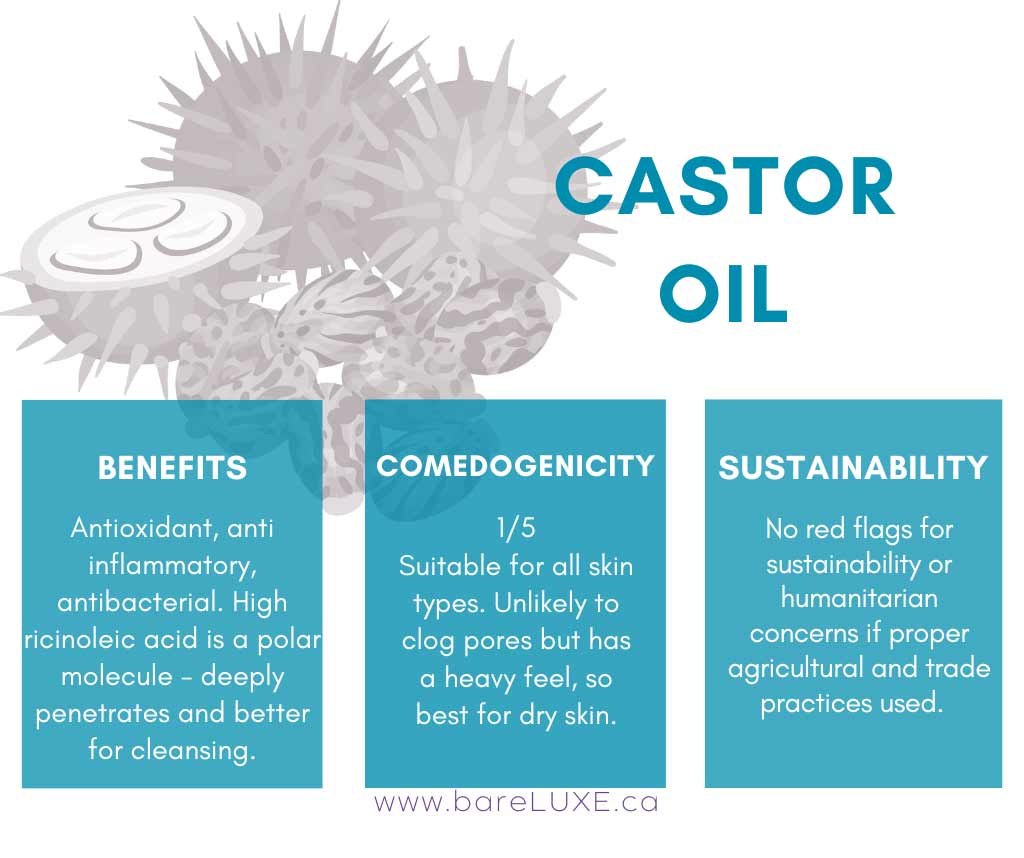Peasy!
Hey there, skincare enthusiasts! We’ve all heard the buzz about castor oil, right? It’s a superstar in the natural beauty world, with everyone raving about its amazing benefits for hair, skin, and even eyelashes. But there’s always that lingering question: does castor oil clog pores?

Let’s dive in and get to the bottom of this, because I know you’re itching for the answer, just like I was!
First things first, let’s talk about comedogenicity. It’s a fancy word, but basically, it means how likely a product is to clog your pores.
Here’s the good news: castor oil is generally considered non-comedogenic. That means it has a low comedogenic rating, which is awesome! So, technically, it shouldn’t clog your pores.
But wait! Before you rush out and slather castor oil all over your face, let’s consider a few things.
Everyone’s skin is different: Just because castor oil is non-comedogenic for most people, doesn’t mean it’ll be a perfect match for you. Some folks have more sensitive or acne-prone skin that reacts differently to even the gentlest of ingredients.
Thick and sticky: Castor oil has a thick consistency, and while that’s great for deep conditioning and hydrating, it can also feel a bit heavy on the skin. For some people, this can lead to clogged pores.

It’s all about balance: It’s important to remember that your skin needs a balanced approach. While castor oil is great for treating dry patches and adding moisture, it’s not meant to be your only skincare product.
So, what’s the verdict?
Well, it’s a bit of a balancing act. While castor oil is generally considered safe for most skin types, it’s always a good idea to play it safe and listen to your skin.
Here’s what I suggest:
1. Patch Test: Before going all out, do a patch test on a small area of your skin. This will help you see how your skin reacts to the oil without risking a full-blown breakout.
2. Dilute: If you have oily or acne-prone skin, consider diluting the castor oil with a carrier oil like jojoba oil or almond oil. These oils are also non-comedogenic and will help make the castor oil less thick.

3. Don’t Overdo It: Less is more when it comes to castor oil. Start with a small amount, and if your skin seems happy, you can gradually increase it.
Remember, listen to your skin! If you notice any breakouts, irritation, or clogged pores, simply stop using the oil and consult with a dermatologist if needed.
Here’s a helpful table summarizing the pros and cons of using castor oil on the face:
| Benefits | Potential Drawbacks |
|---|---|
| Deeply hydrates and nourishes the skin | Can be thick and sticky |
| Can help reduce inflammation and irritation | Might clog pores for some individuals |
| May promote healing and skin regeneration | May not be suitable for all skin types |
| Can improve the appearance of acne scars | Can be a bit difficult to wash off |
Ready to give castor oil a try? What are your experiences with this versatile oil? Share your thoughts and tips in the comments below!